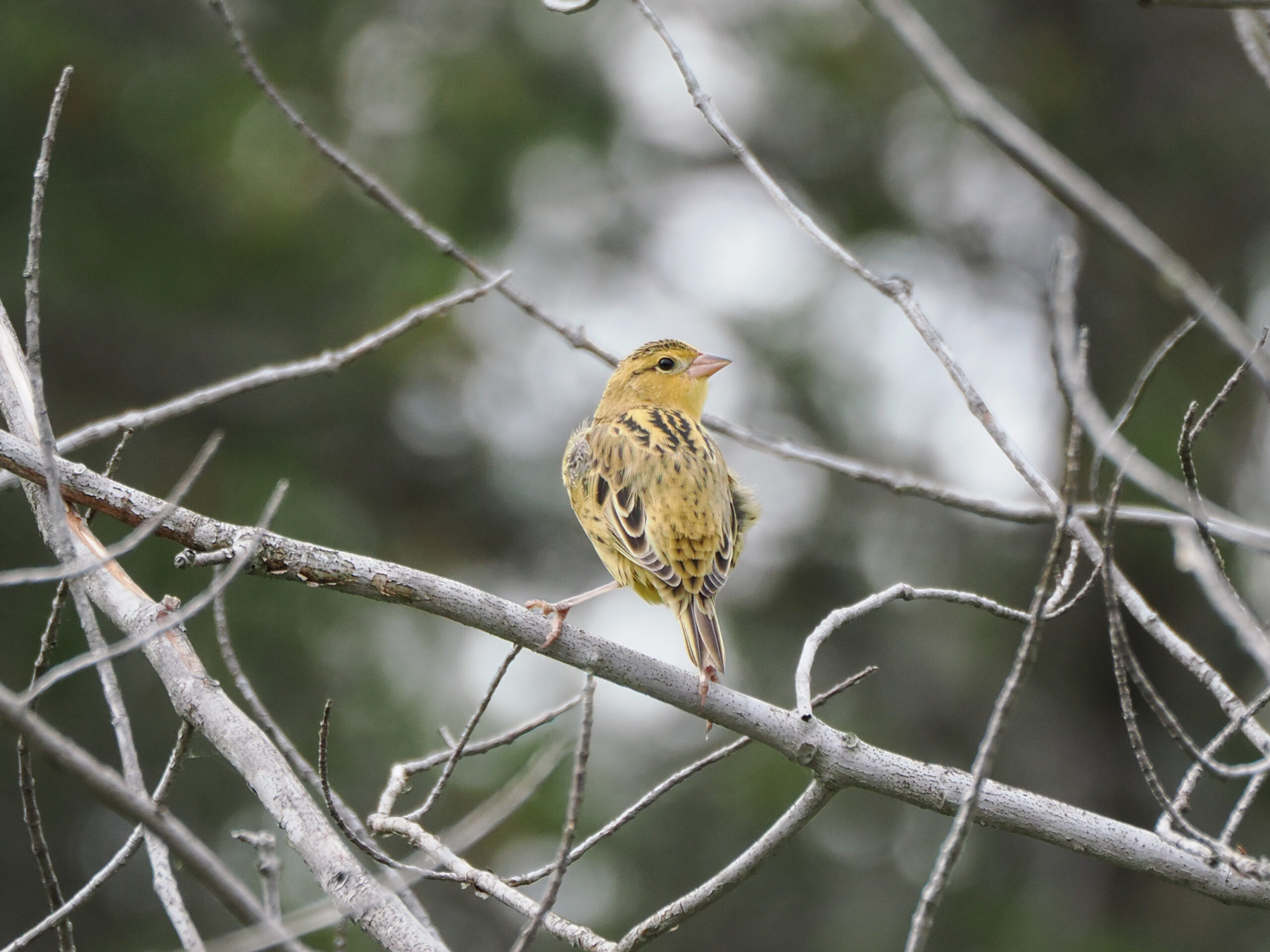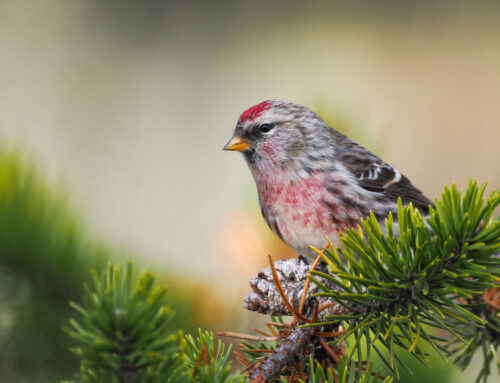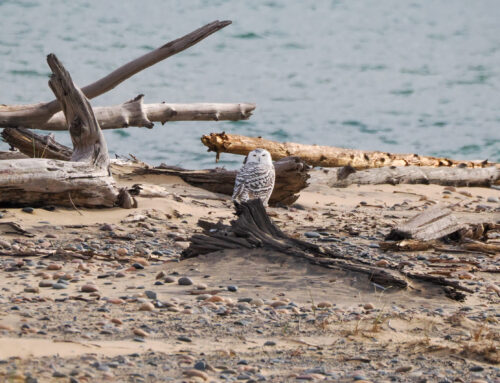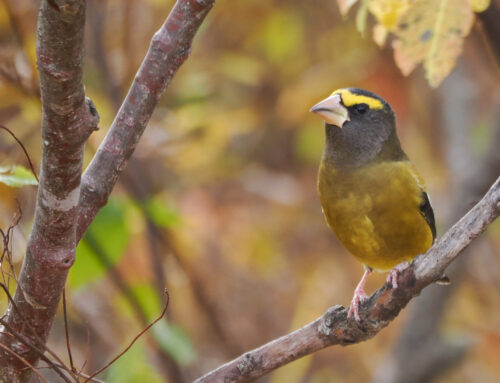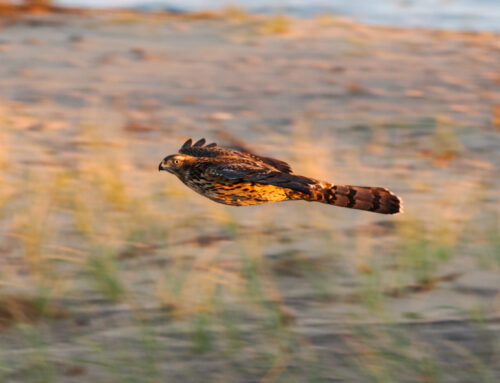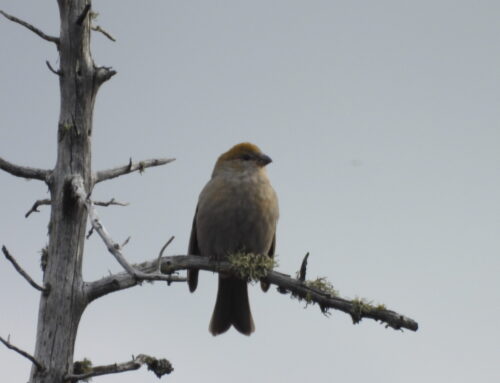We’ve now hit early-October here at Whitefish Point, and we’re right in the middle of fall migration. Besides the huge uptick in waterbird migration that Frank will cover in his blog, the last of the early-season migrants are giving way to more sparrows, finches, and other mid-fall species. The week was characterized by a lot of warm, clear days and moderate-to-strong south winds, though a cold front on Oct. 6th brought cool northwest winds and a hint of the next seasonal turn.
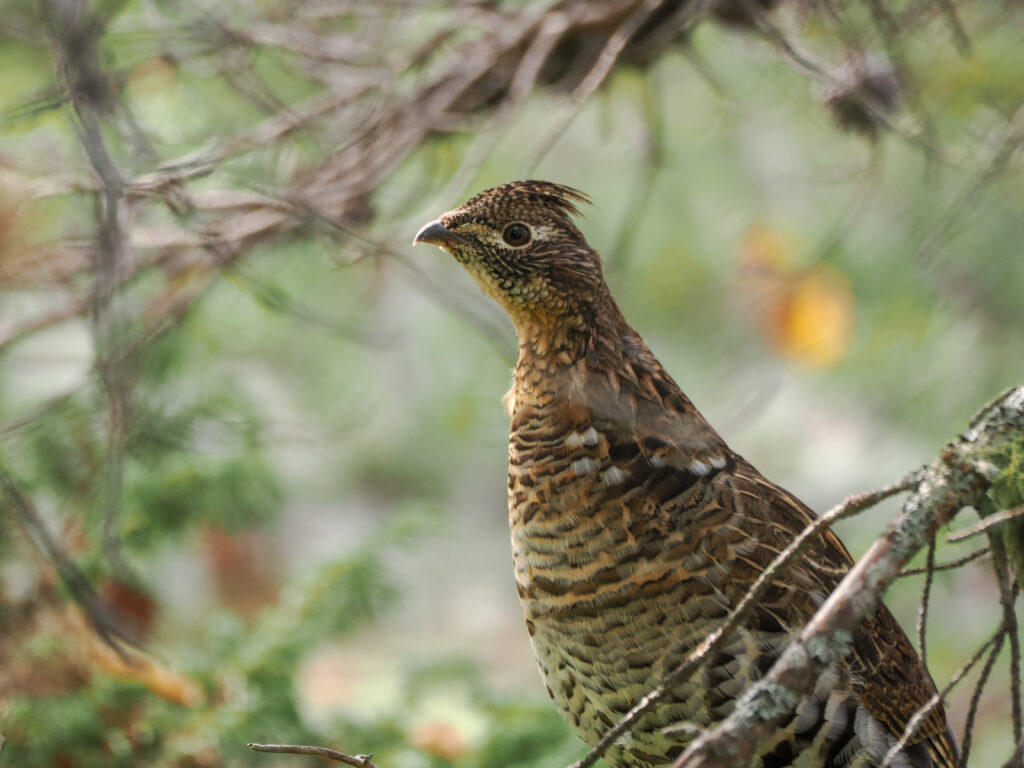
While still somewhat scarce, we’ve been seeing a few more Ruffed Grouse in the past week. Photo by Clay Bliznick.
We had a substantial songbird migration event occur on Friday, Oct. 3rd where waves of new individuals flooded across the lake, many of which have stuck around the Point for the past few days. The most notable of these migrants were Dark-eyed Juncos, with 242 birds counted on the morning flight survey. However, this was just a snapshot of the many hundred more scattered throughout the Point that day. This timed up with a broad regional flight across the southern shore of Lake Superior the same morning, where even larger numbers of juncos were detected in Marquette and the Keweenaw Peninsula to the west. Other birds of note from the morning flight counts included an uptick in both Purple Finch and Redpoll numbers.
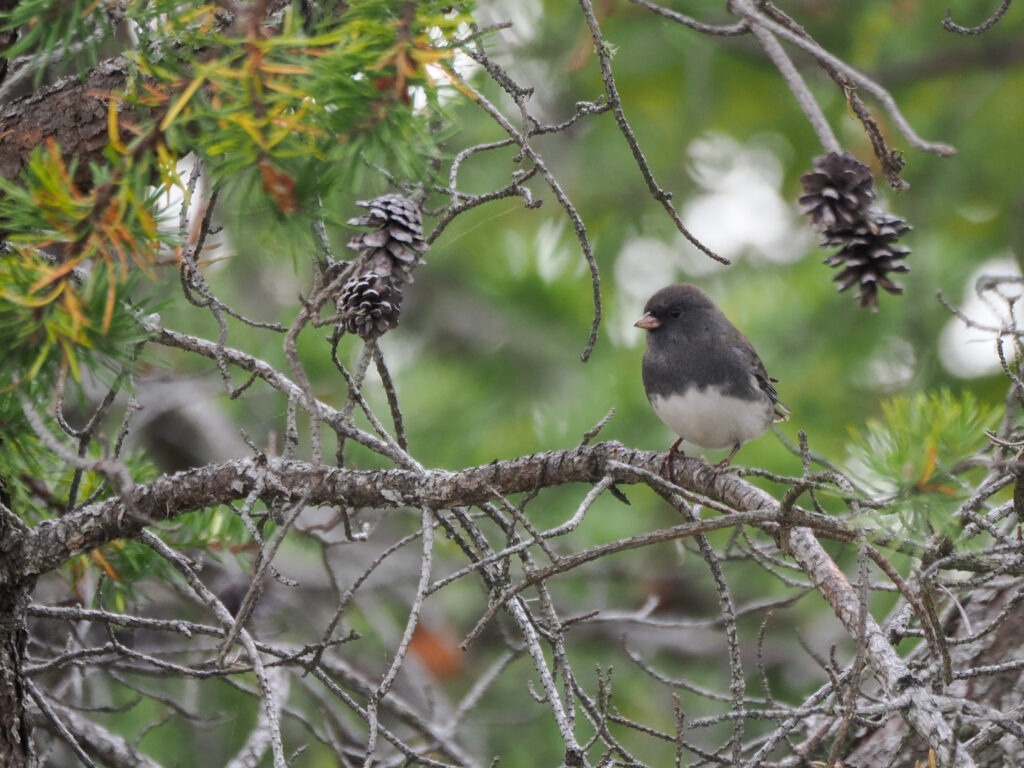
One of the many, many Dark-eyed Juncos we saw passing through the Point this past weekend. Photo by Clay Bliznick.
The most exciting bird of the week was a juvenile Purple Gallinule found at the Whitefish Point harbor on the evening of Oct. 3rd by Frank Fabbro and observed by several birders before disappearing into the night. This marks the first record for Michigan’s Upper Peninsula, an extraordinary occurrence for a species typically found in the southeastern U.S. Coincidentally, another individual was found in a marsh in the western Lower Peninsula the next day. While some may assume this would be the same bird, this species tends to display a seasonal pattern of vagrancy in the fall and is almost assuredly a different individual. With two of these normally secretive marsh birds detected in Michigan over a 24-hour span, we can only wonder how many more may be out there. Something to think about as you check your favorite local birding spots!
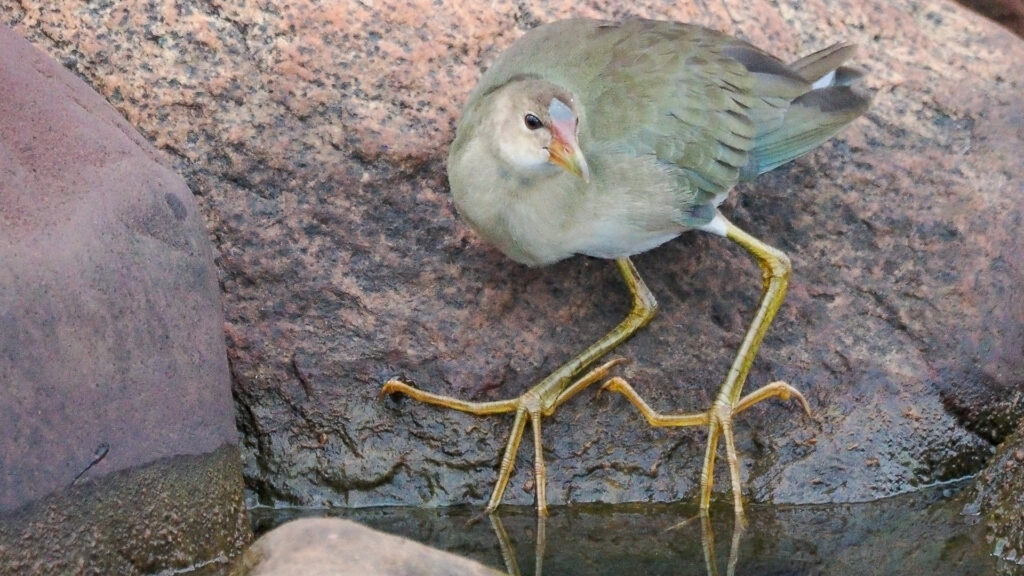
Those long legs and toes on this young Purple Gallinule were something else! Photo by Clay Bliznick.
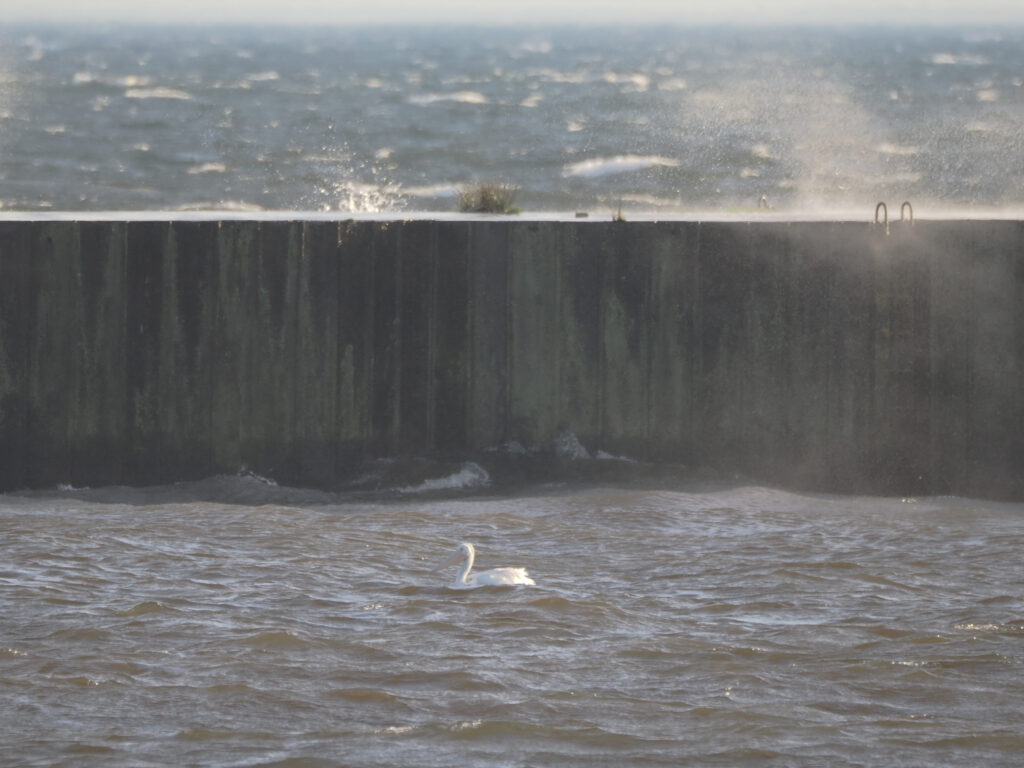
Another unusual visitor to the harbor over the past couple of days has been an American White Pelican. Photo by Clay Bliznick.
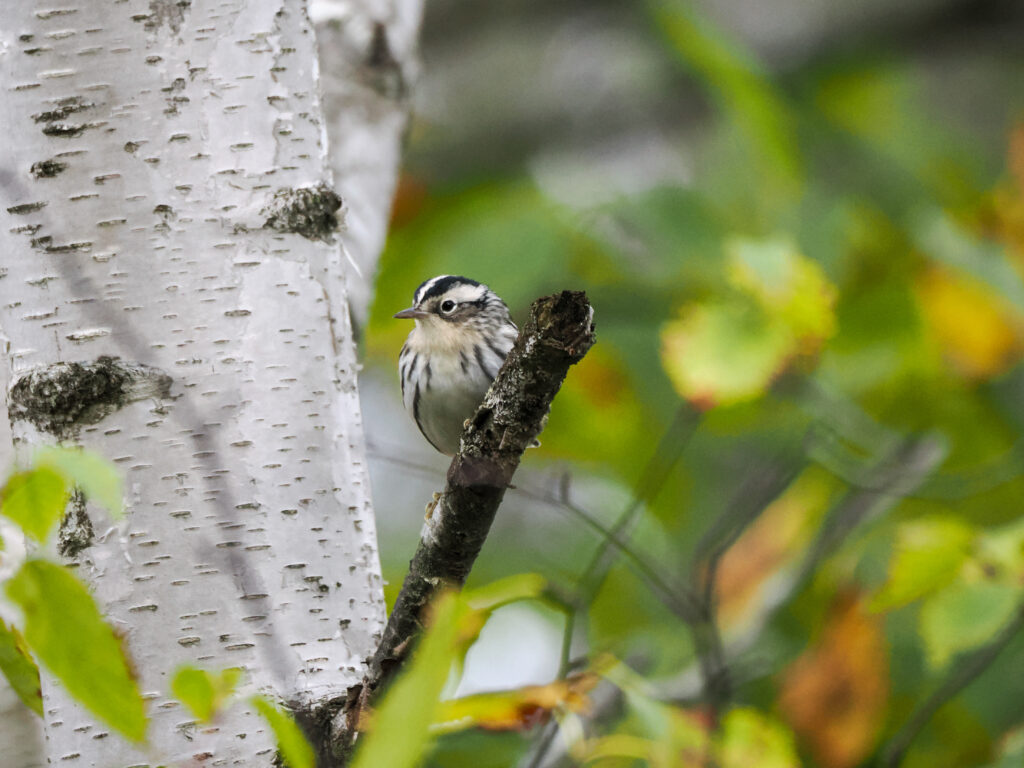
I found the aesthetic of the birch bark next to this late Black-and-White Warbler to be pretty cool. Photo by Clay Bliznick.
~ Clay Bliznick
2025 Fall Field Ornithologist
Featured photo: Bobolink by Clay Bliznick.
Track the morning flight counts on Trektellen.
Keep up with the 2025 Fall Field Ornithologist’s weekly blog posts and follow WPBO’s social media (Facebook, Instagram, and X).
Join Clay for one of his WPBO Migratory Bird Walks offered every weekend through November 15.
Learn more at wpbo.org/events.
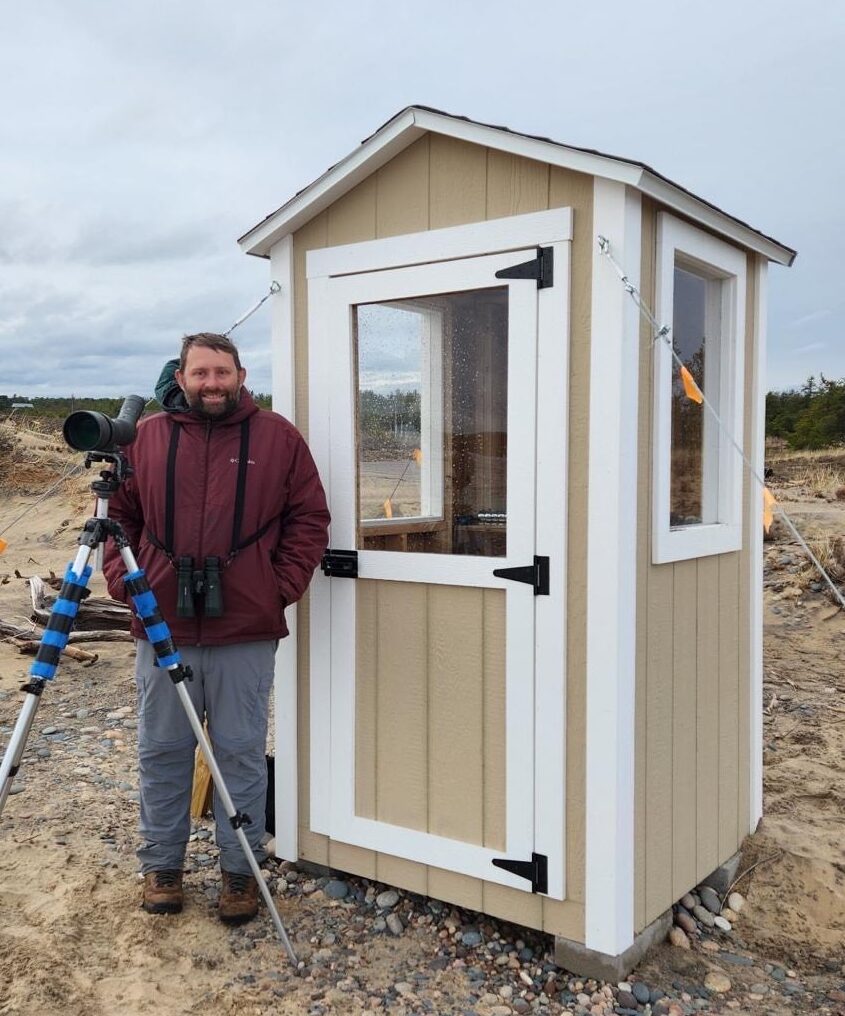
Clay Bliznick, MS: 2025 Fall Field Ornithologist
Clay worked as the WPBO fall field ornithologist in 2024 and is excited to return for the fall of 2025. He first took an interest in birds during a high school trip to Alaska, where he was struck by the flamboyance of magpies, the sleek, penguin-like appearance of alcids, and the sheer number of waterbirds residing along the coast. He dove headfirst into the world of birding while an undergraduate at the University of Kentucky, spending every free second exploring his home state for exciting new birds and places. Afterwards, he attended graduate school at Murray State University and wrote a master’s thesis examining the response of bird communities to environmental factors in Western KY bottomland hardwood forest restorations. For the last several years, Clay has traveled throughout the US working with birds in varying capacities, including nest monitoring of Florida Grasshopper Sparrows and Crested Caracaras, conducting surveys of Swallow-tailed Kite post-breeding roosts, and collecting breeding bird data in North and South Dakota for the Bird Conservancy of the Rockies.

